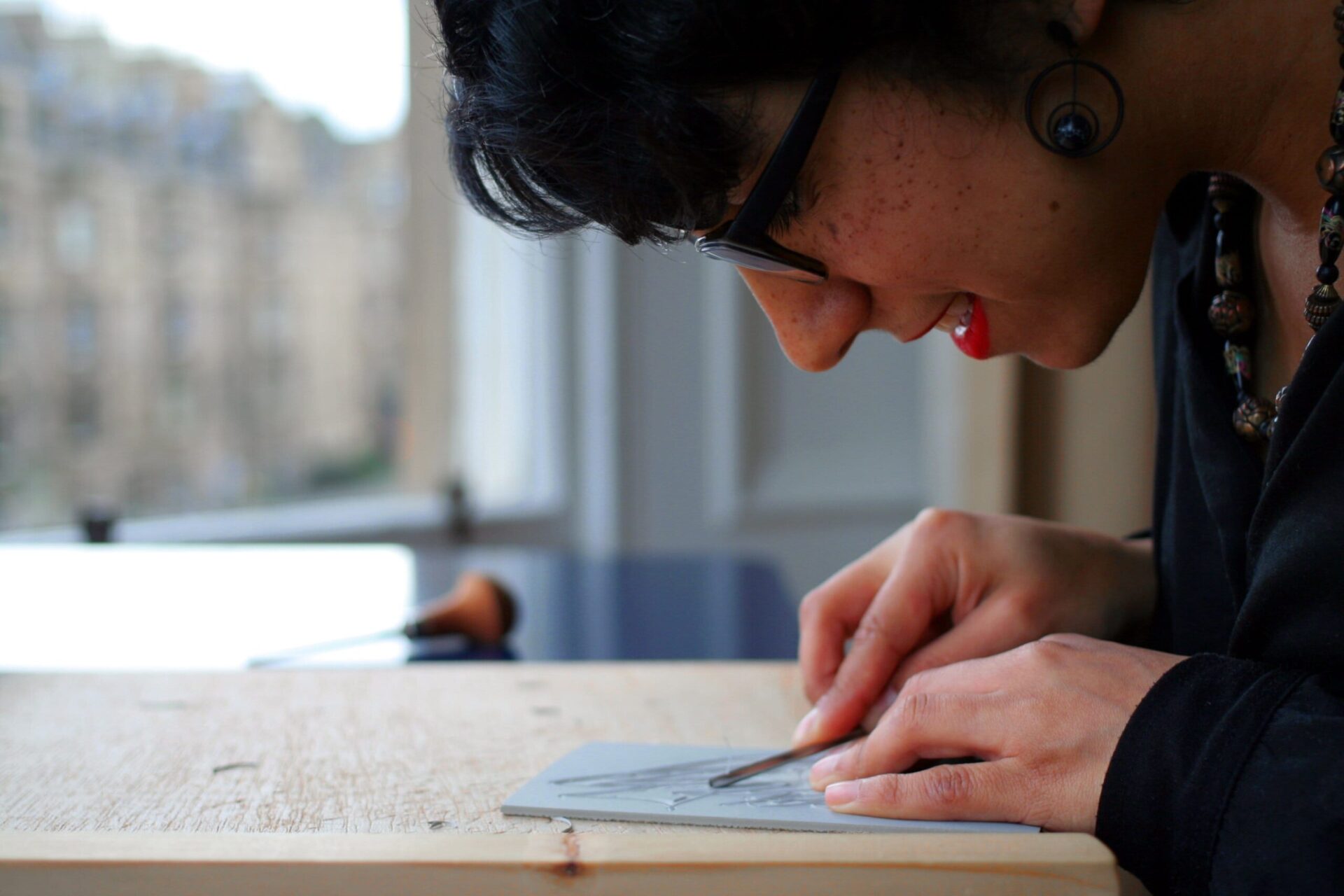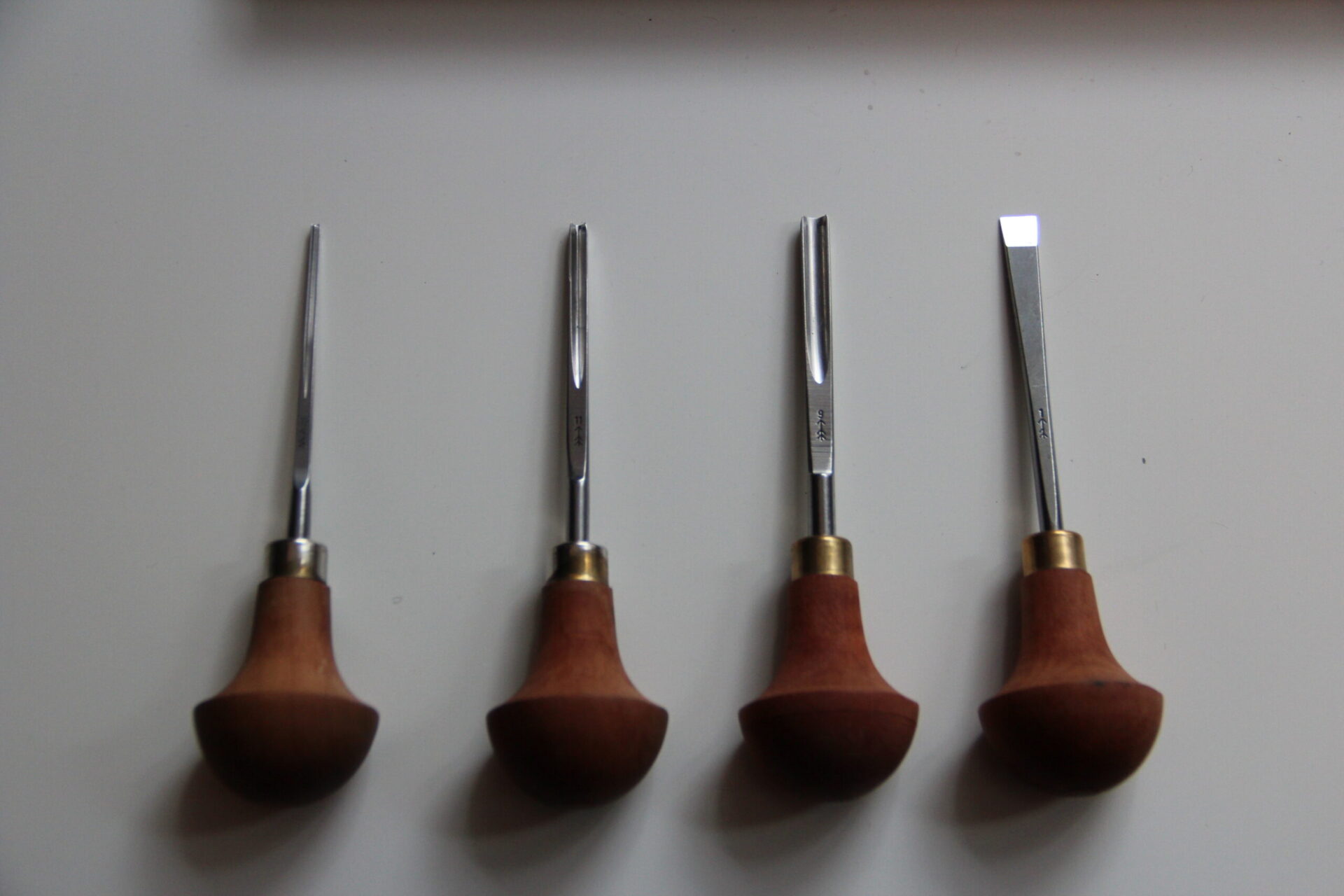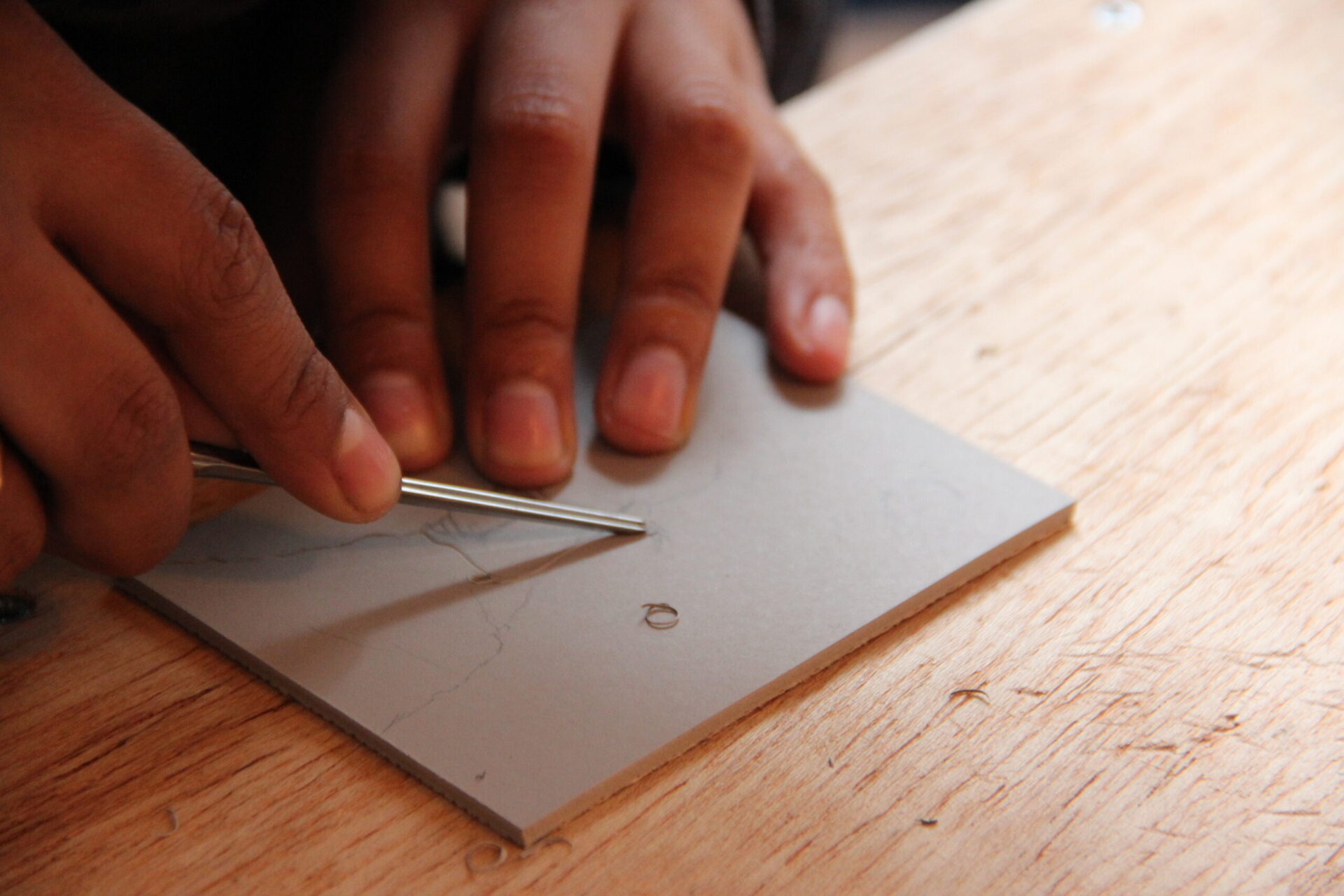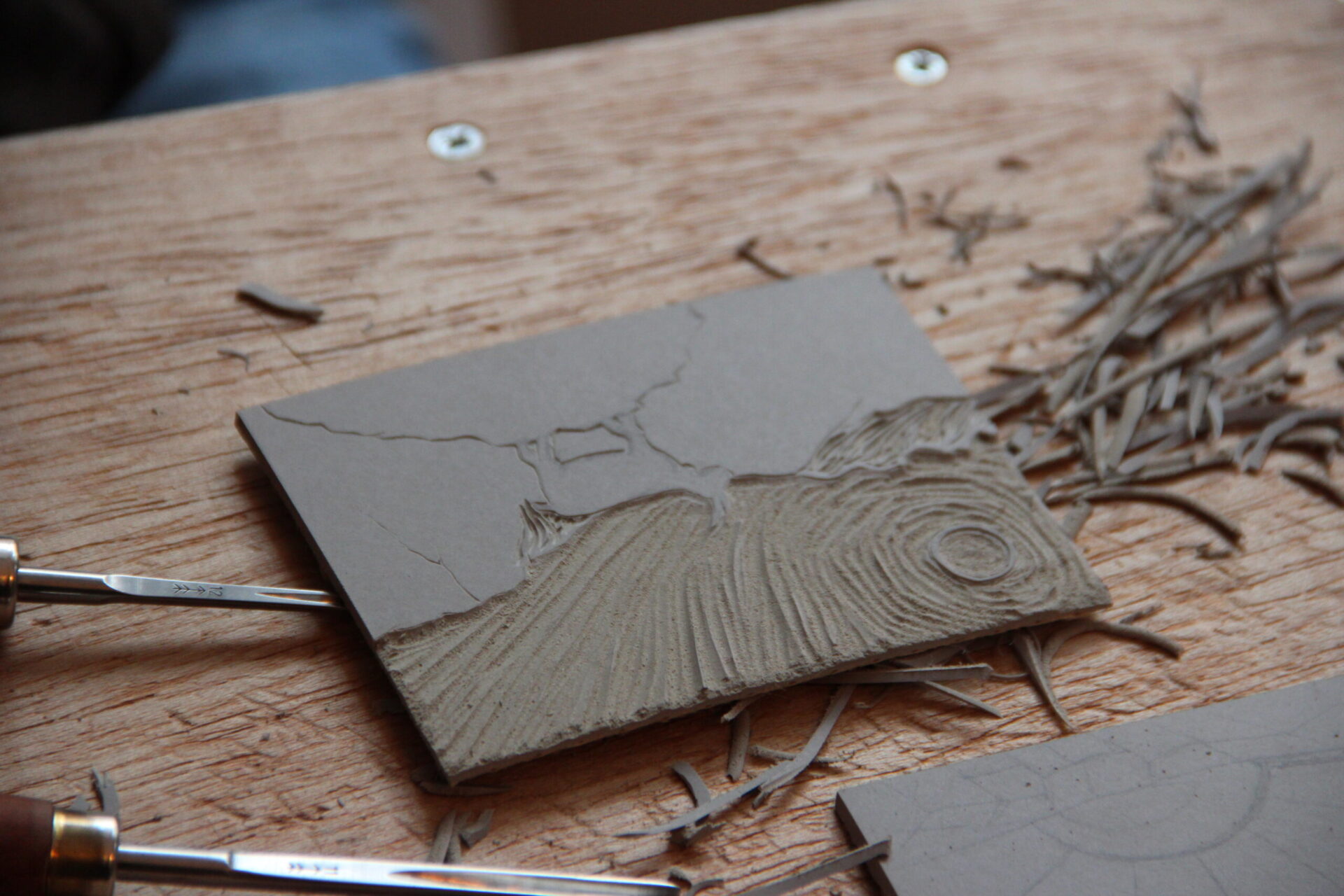Linocut Card Making Workshop
£35.00
Out of stock
Description
Learn how to make a linocut card with one of our linopress/linocut Collectivists: Fran from Fran’s Press. In this course you will design, carve and print your own, single colour linocut greetings card. Fran will teach you some basic techniques and by the end of the course you will have enough knowledge to start printing independently at home, as well as a lovely hand printed card!
How did linoleum printing come about?
Linoleum was created in the 1800s and used in the late 1800s as a floor covering. Traditional wood and metal blocks for printing were expensive and time consuming to create.
Linoleum was cheaper to produce, and offered an easier surface to carve than wood and metal, especially when heated. It wasn’t as tough as metal, and didn’t have the surface grains and patterns that made wood trickier to carve. As linoleum was a softer material, it was much quicker to achieve results with the new linocut technique.
So linoleum started out as a cheap alternative, and was often used by amateurs or as a teaching product in schools, according to the Printmaking Dictionary.
But when artists such as Henri Matisse and Pablo Picasso started using linoleum in the early 1900s, its popularity grew.
Linocuts were popular among the German Expressionist and Russian Constructivist movements in the beginning of the 20th century, including German artist Gerd Arntz, who liked the stark contrasts the technique offered.
The Grosvenor School of Modern Art opened in London in 1925. Claude Flight taught linocut classes there, showing students how to produce multi-colour linocut prints by using different blocks for each colour. These British prints were highly influenced by cubism and Futurism. The First Exhibition of British Linocuts was curated by Flight in 1929.
Pablo Picasso Linocuts
In the late 1950s, Pablo Picasso advanced linocuts in fine art by developing the reductive printmaking technique.
Picasso’s first prints in the early 1950s were made up of bold and simple images. He liked the linocut technique as he thought it lent itself well to graphic posters, and he began experimenting with creating multiple colour prints using a single block.
His technique involved printing the lightest layer first, with each successive layer being carved away from the linoleum and printed over the last. This reductive technique meant it was impossible to reproduce the work afterwards so artists could create predetermined editions.
Thanks to Great North Art Show for the linocut history and definition
Read about two sets of Picasso linocuts acquired by The British Museum
Linocut printing in the modern day
The linocut technique of printing has risen and fallen in popularity over the years. With artists like Picasso and Matisse popularising and demonstrating the potential of the technique, its acceptance as a fine art practice was solidified. But as the printmaker and publishers collaborated to produce more complex images, it is practiced much more rarely nowadays.
Fran, our workshop tutor, in her own words:
“I began lino printing in my spare time about five years ago after spending my birthday money on cutters, lino, ink and a roller. Most of my work is created at home using the back of a wooden spoon and a little bit of elbow grease in lieu of a press.
To me linocuts are like magic. I love the way you can start with a vague idea and see it coming together as you carve. But even more I love the way that you can never fully understand what’s been carved until it’s finally been printed.
I am inspired in some part by beautiful creatures in nature and in some part by fleeting images in my imagination. I am captivated by myths and legends and magical creatures and I’m always longing to explore this more in my art. My work is sometimes realistic and sometimes more stylised, but it is all brought together by common textures and carved shapes and marks that are unique to linocuts and which breathe life into my messy drawings.”
All materials and refreshments will be provided.
Six places are available at the workshop.




